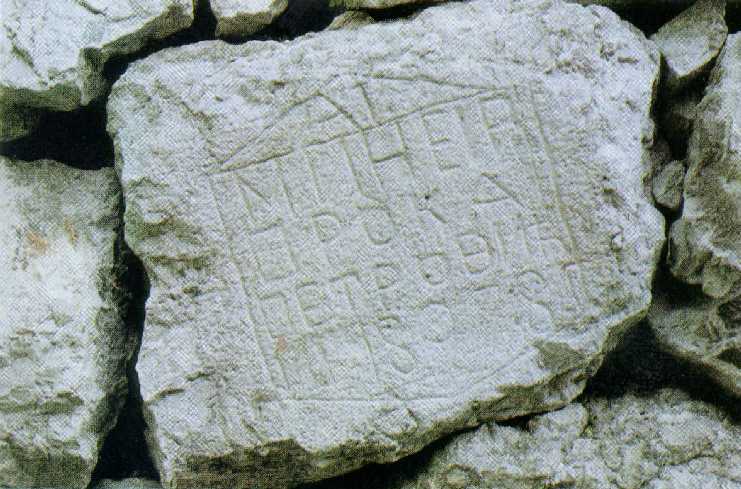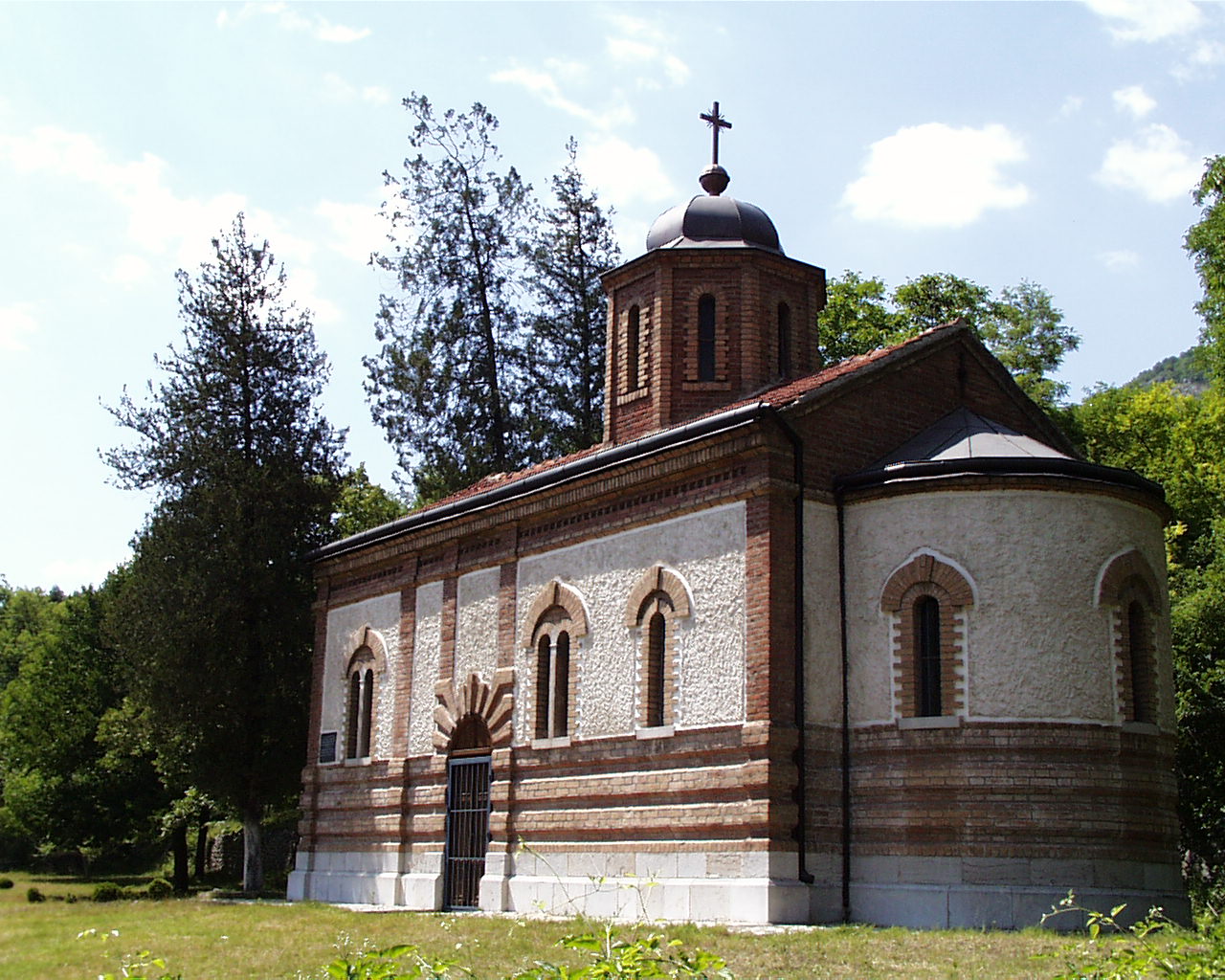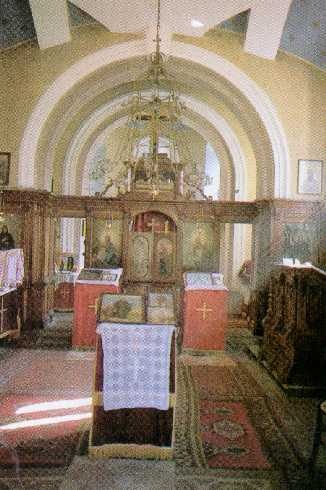

MONASTERY OF ST. PARASKEVE OF IVIRION
The Monastery of St. Paraskeve of Ivirion is located on a formerly inaccessible place on the right bank of Nišava. On the high steep rocks in front of which contemporary people had to stop, on the very spot where the first tunnel later opened the way towards Sofia, the ruins of the old Monastery of St. Paraskeve of Ivirion could be seen until the last decade of the 19th century. Its existence represents another confirmation that the Sićevačka Klisura Gorge had really been a colony of monks. We do not know the history of the original monastery. Yet, the name “Iverica”, added to the Saint’s name, suggests that the old monastery had been founded by the monks from the Georgian Monastery of Ivirion at the Mount Athos. Most likely, at the end of the 14th century when the Turkish power was in its peak many monks withdrew from the occupied Balkan countries, as well as from the Mount Athos and its Monastery of Ivirion, to the secluded region of the Sićevačka Klisura Gorge. They established a monastic colony, the part of which being the Monastery of St. Paraskeve of Ivirion. The Monastery was mentioned for the last time in the Turkish real-estate registry made during the reign of the Sultan Mehmed III (1295-1603). At the end of the 16th century, the Monastery was ensuring significant income to the Turks from the tithe on wheat, fruit, bee-hives, mills and other.Today, we can see only a room with a fireplace remained of the former monastery dormitory. An impressive truncated stone pyramid is the only testimony of the age of the monastery, and so is the still vivid legend. According to it, the Monastery was demolished during a great church fair. On that occasion, the Turks buried alive twelve brides with their jewelry in front of the church door…
The present church of St. Paraskeve was built on the fundaments of the former object in 1898 by the engineer corps of the Serbian army. The news of the miraculous salvation of the King Alexander I Obrenovic from drowning in the sea near Biarritz in France reached the army units in cutting the road and railroad through the Sićevačka Klisura Gorge. As a sign of gratitude to “the Almighty who saved the precious life of His Highness the Master of Serbia”, as written on the commemorative plaque to the right from the entrance, the officers and privates of the engineer corps built the church under the supervision of the captain Živojin Damjanović.

A SAPPER’S INSCRIPTION ON THE SUPPORTING WALL STONE
The Church of St. Paraskeve was built according to a standard design of the Ministry of Architecture, in the then prevailing Serbian-Byzantine style. It is a single-nave building with a semicircular apse on the eastern part. Above the naos there is a dome on the octagonal tambour. The facade surfaces are decorated in such a manner to make an impression of the alternating use of stone and bricks. The temple is entered from the west and south through arched doors, whose archivolts are radially ornamented. The church is well illuminated through four biforium-shaped windows on the naos, three simple windows on the apse and one on each side of the tambour. All the windows are arched and have archivolts in shallow relief. The icons for the iconostasis were painted by the artist Milutin Marković, the teacher at the High School “King Milan I” in Niš.

THE CHURCH INTERIOR
It is of particular interest that the King Alexander I Obrenović appointed by the Decree of February 19th 1901 the military priest Mr. Žunić for “the head of the Military Monastery of St. Paraskeve”. The full name of the Monastery is written on the Monastery seal stamped on the cable of May 29th 1903 which informed on the death of King Alexander and Queen Draga – the name is “The Royal Serbian Military Monastery of St. Paraskeve of Ivirion”. It is the only military monastery known it the history of Serbian Orthodox Church.